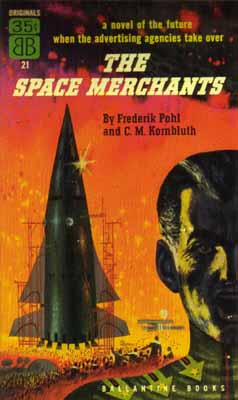

The Venus Transit 2004
... Brief InfoSheet D10
Venus in Science Fiction
Is there life on other worlds, especially on the other worlds of the Solar System? This fundamental question has been discussed many times, and not only by philosophers and scientists. It is also a theme in numerous stories and novels. What kinds of landscape exist on other worlds, what life forms inhabit them (men, plants, animals ?) and are these supposed life forms sufficiently intelligent and evolved to contact us?
While most of the thoughts by ancient philosophers centred on the issue of possible lunar inhabitants, scientists who lived at the time when the telescope was established as the main tool of astronomy soon became more interested whether the planets known from old days - Mercury, Venus, Mars, Jupiter and Saturn - might also be abodes of life.
The French astronomer Pierre Gassendi (1592-1655) believed that the varying amounts of solar radiation which reached the planets would characterise the conditions on the planets and the nature of their inhabitants. So we have to imagine that the inhabitants of Mercury were much smaller and less perfect than the Venusians and they in turn were inferior to the Earth's inhabitants.
Bernard de Bovier de Fontenelle (1657-1757) in France also believed in Venusian inhabitants in his extraordinary book "Entretiens sur la Pluralité des Mondes" published in 1686. It was the first well-founded scientific novel about extraterrestrial worlds. The author spoke about civilisations on Mercury, Venus and Saturn. Fontenelle's novel was the most popular book of this type until the end of the 18th century.
Immanuel Kant , the famous Königsberg philosopher (1724-1804), put forward the theory that the fauna and flora of individual planets were made out of material the lightness and faintness and which depended on their distance from the Sun. So the inhabitants of Earth and Mars were situated at a low level, much lower than the intelligence of the inhabitants of Venus and Mercury.
Until the middle of the 19th century, ideas of life on other planets were based mostly upon pure fantasy or more or less scientifically based assumptions but not on hard facts. Then the method of spectroscopic observations and new knowledge of chemistry seemed to show that all the planets of the solar system contain the same chemical elements as the Earth. Thus scientists at the beginning of the 20th century concluded that Venus had an atmosphere like that of the Earth. The French astronomer and popular writer Camille Flammarion (1842-1925) described these ideas very impressively in his book "Inhabited Worlds" .
| Venus came to the fore as a theme for science fiction novels in the 1930s. They depicted the planet as a virgin world with fauna and flora which existed on Earth during the Carboniferous and Permian periods (jungles, deserts, oceans, volcanoes and dinosaurs). The stories reflected the colonial history of Africa and the American West. The best known novels about Venus were written by Edgar Rice Burroughs: "Pirates of Venus" (1934), "Lost on Venus" (1935), "Carson of Venus" (1939), "Escape on Venus" (1946) and "The Wizard of Venus" (posthumously in 1970). The Polish author Stanislav Lem was one of the first to create an image of Venus very similar to our present knowledge of the extreme surface conditions on the planet. In his novel "The Astronauts" (1951), he described the surface of Venus as a hellish place. The astronauts who visit it on an international expedition see that the cause is not natural. When they discover the remains of an extinct high technology civilisation, they find evidence that the inhabitants had committed nuclear suicide and destroyed their environment. The first flybys of Soviet and American spacecraft and their transmitted data brought to an end the classical Venus science fiction novels, because they showed that Venus was absolutely unsuitable for colonising adventures. Science fiction writers therefore "migrated" onwards to extra-solar planets (exoplanets) near other stars. | |
Want to know more?
This topic is discussed in a more detailed way in the associated Extended InfoSheet.
Back to the List of Brief InfoSheets.

